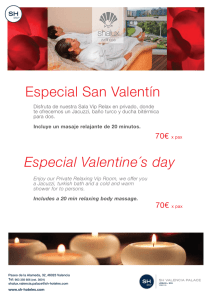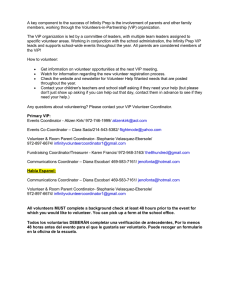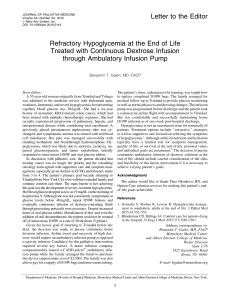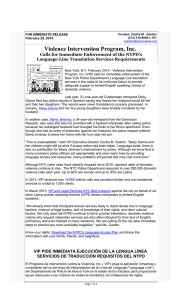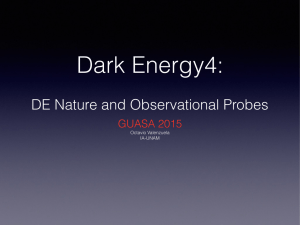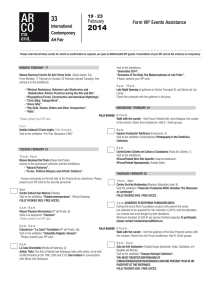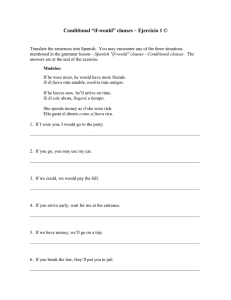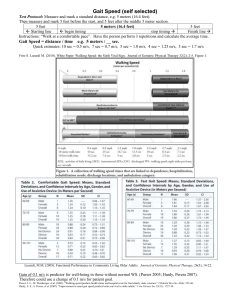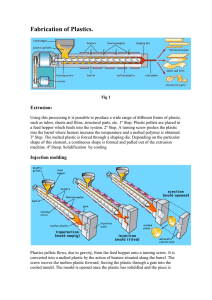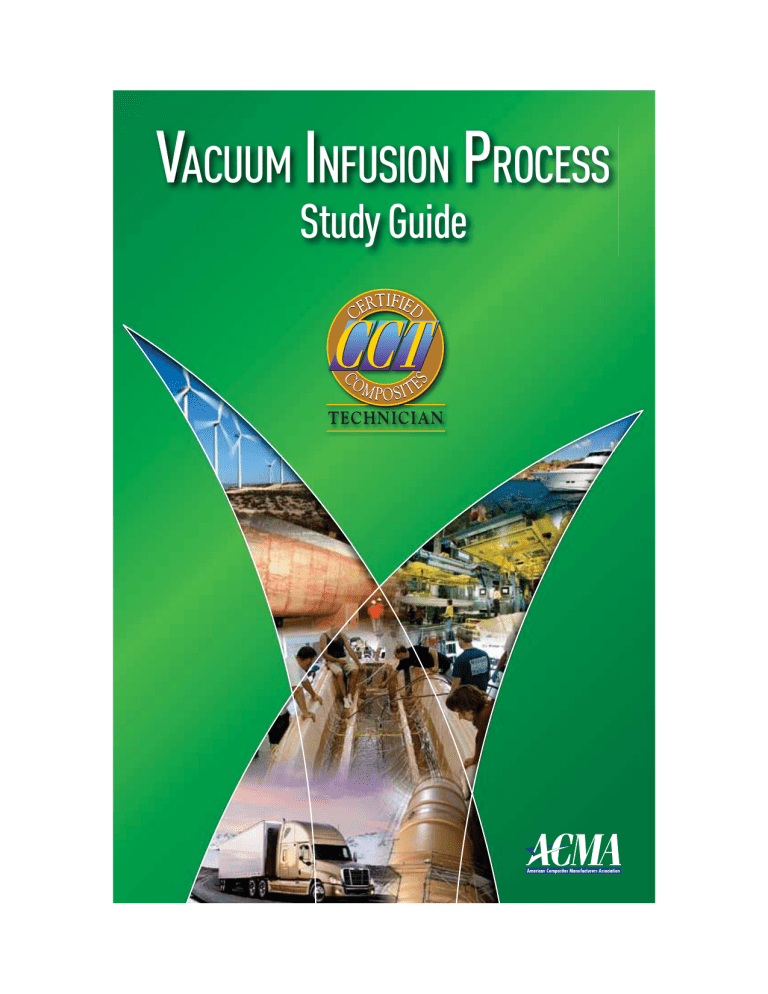
VACUUM INFUSION PROCESS Study Guide Vacuum Infusion Process When you apply to become a Certified Composites TechnicianVacuum Infusion Process, you take the first step towards achieving excellence in the composites industry, advancing your career, and pursuing comprehensive composites knowledge. The CCT program is designed to elevate standards in the industry by enhancing individual performance and recognizing those who demonstrate critical knowledge of the composites industry. The CCT-VIP designation is a noted symbol of education among employers, employees, and industry professionals. As the industry advances, being a CCT will become increasingly important. If you are committed to developing your career, attaining the CCT-VIP designation will allow others to recognize you as a certified composites industry professional. ©2009 American Composites Manufacturers Association 1 Disclaimer The sole purpose of this Study Guide is to assist in the preparation for the CCT examination. It is not a formal code or standard of the American Composites Manufacturers Association nor is the information contained herein based upon such a code or standard. While the Study Guide reflects ACMA’s understanding of current industry practices in general, nothing herein should be viewed as a recommendation by ACMA that any application, technique or process is appropriate in any particular circumstance. Similarly, the fact that a particular application, technique or process is listed in the Study Guide should not be viewed as an endorsement by ACMA of such application, technique or process. ACMA makes no claims concerning the accuracy or applicability of the information contained in the Study Guide and ACMA is not responsible for the results obtained from the use of such information. Determination of the suitability of the information in the Study Guide other than for the preparation for the CCT Examination is the sole responsibility of the user. This Study Guide is sold without warranties, express or implied, including but not limited to any implied warranty of merchantability or fitness for a particular purpose. ACMA expressly disclaims all such warranties. ACMA is not responsible for any damage or loss caused or alleged to be caused by the information contained herein. Accordingly, ACMA shall not be liable for any direct, indirect, incidental, special or consequential damages, resulting from the use of the Study Guide. ACMA does not accept any liability based on the designation conferred upon an individual who successfully completes the certification program. Any company recognizing the conference of such a designation is responsible for verifying any and all credentials and skills of anyone with the CCT designation. ©2009 American Composites Manufacturers Association 1010 North Glebe Road, Suite 450 Arlington, VA 22201 Phone: 703-525-0511 Fax: 703-525-0743 www.acmanet.org All rights reserved. No part of this book may be reproduced or resold, in any form or by any means, without permission from the publisher. Printed in the United States 2 www.acmanet.org Table of Contents Introduction to VIP Definition of Open Versus Closed Molding . . . . . . . . . . . . . . . . . . . . . . . . . . . . . . . . . . 5 History of VIP . . . . . . . . . . . . . . . . . . . . . . . . . . . . . . . . . . . . . . . . . . . . . . . . . . . . . . . . . . . 6 VIP Market Overview. . . . . . . . . . . . . . . . . . . . . . . . . . . . . . . . . . . . . . . . . . . . . . . . . . . . . 7 Module 1 Gel Coat Application Sec 1: Introduction to Gel Coating Technology . . . . . . . . . . . . . . . . . . . . . . . . . . . . 13 Sec 2: Gel Coating Safety . . . . . . . . . . . . . . . . . . . . . . . . . . . . . . . . . . . . . . . . . . . . . . 15 Sec 3: Gel Coat Storage and Handling . . . . . . . . . . . . . . . . . . . . . . . . . . . . . . . . . . . 18 Sec 4: Raw Material Quality Assurance . . . . . . . . . . . . . . . . . . . . . . . . . . . . . . . . . . 19 Sec 5: Overview of Spray Gun Set-Up . . . . . . . . . . . . . . . . . . . . . . . . . . . . . . . . . . . . 19 Sec 6: Gel Coat Application Methods . . . . . . . . . . . . . . . . . . . . . . . . . . . . . . . . . . . . 21 Sec 7: Pre-Gel Coat Checklist . . . . . . . . . . . . . . . . . . . . . . . . . . . . . . . . . . . . . . . . . . 23 Sec 8: Controlled Spraying . . . . . . . . . . . . . . . . . . . . . . . . . . . . . . . . . . . . . . . . . . . . . 24 Sec 9: Plural Component Application Equipment. . . . . . . . . . . . . . . . . . . . . . . . . . 30 Sec 10: Plant Compressed Air System . . . . . . . . . . . . . . . . . . . . . . . . . . . . . . . . . . . . 32 Sec 11: Fluid Pumps & Initiator Delivery . . . . . . . . . . . . . . . . . . . . . . . . . . . . . . . . . . 35 Sec 12: Review of General Equipment Operating Principles . . . . . . . . . . . . . . . . . . 37 Sec 13: Plural Component Equipment Calibration . . . . . . . . . . . . . . . . . . . . . . . . . . 40 Sec 14: Equipment Maintenance . . . . . . . . . . . . . . . . . . . . . . . . . . . . . . . . . . . . . . . . . 43 Module 2 Vacuum Infusion Process Theory Sec 1: Introduction to VIP . . . . . . . . . . . . . . . . . . . . . . . . . . . . . . . . . . . . . . . . . . . . . . 51 VIP CCBM Light RTM Sec 2: Overview of VIP Methods and Techniques . . . . . . . . . . . . . . . . . . . . . . . . . . 52 Sec 3: Vacuum Infusion Theory . . . . . . . . . . . . . . . . . . . . . . . . . . . . . . . . . . . . . . . . . 57 Physics of the VIP processes: Darcy’s Law . . . . . . . . . . . . . . . . . . . . . . . 57 Viscosity . . . . . . . . . . . . . . . . . . . . . . . . . . . . . . . . . . . . . . . . . . . . . . . . . . . . 57 Porosity/Permeability . . . . . . . . . . . . . . . . . . . . . . . . . . . . . . . . . . . . . . . . . 59 Vacuum pressure . . . . . . . . . . . . . . . . . . . . . . . . . . . . . . . . . . . . . . . . . . . . 60 Flow distance . . . . . . . . . . . . . . . . . . . . . . . . . . . . . . . . . . . . . . . . . . . . . . . . 62 ©2009 American Composites Manufacturers Association 3 Certified Composites Technician – Vacuum Infusion Process Study Guide Table of Contents Module 3 VIP Best Practice Rules Sec 1: Installation of Dry Reinforcements . . . . . . . . . . . . . . . . . . . . . . . . . . . . . . . . 67 Ply Positioning . . . . . . . . . . . . . . . . . . . . . . . . . . . . . . . . . . . . . . . . . . . . . . . 67 Core Materials Installation. . . . . . . . . . . . . . . . . . . . . . . . . . . . . . . . . . . . . 68 Tack Spray Usage . . . . . . . . . . . . . . . . . . . . . . . . . . . . . . . . . . . . . . . . . . . . 68 Sec 2: Installation of Feed and Vacuum Lines . . . . . . . . . . . . . . . . . . . . . . . . . . . . . 68 Sec 3: Vacuum Bag Installation and Testing . . . . . . . . . . . . . . . . . . . . . . . . . . . . . . 70 Sec 4: Shop Floor Infusion Rules. . . . . . . . . . . . . . . . . . . . . . . . . . . . . . . . . . . . . . . . 70 Sec 5: Operating Pressure for VIP/CCBM/LRTM . . . . . . . . . . . . . . . . . . . . . . . . . . 72 Sec 6: The Concept of the Resin Front . . . . . . . . . . . . . . . . . . . . . . . . . . . . . . . . . . . 74 Sec 7: Resin Flow and Infusion Rates. . . . . . . . . . . . . . . . . . . . . . . . . . . . . . . . . . . . 75 Sec 8: Flow . . . . . . . . . . . . . . . . . . . . . . . . . . . . . . . . . . . . . . . . . . . . . . . . . . . . . . . . . . 80 Sec 9: Feed and Vacuum Lines . . . . . . . . . . . . . . . . . . . . . . . . . . . . . . . . . . . . . . . . . 86 Module 4 VIP Equipment: Tools of the Trade Sec 1: Vacuum Systems . . . . . . . . . . . . . . . . . . . . . . . . . . . . . . . . . . . . . . . . . . . . . . . 99 Sec 2: Molds for VIP. . . . . . . . . . . . . . . . . . . . . . . . . . . . . . . . . . . . . . . . . . . . . . . . . . 101 Sec 3: Mold Storage. . . . . . . . . . . . . . . . . . . . . . . . . . . . . . . . . . . . . . . . . . . . . . . . . . 109 Module 5 VIP Quality Control and Troubleshooting Sec 1: Procedural Quality Control for VIP. . . . . . . . . . . . . . . . . . . . . . . . . . . . . . . . 115 Sec 2: Quality Methods for VIP . . . . . . . . . . . . . . . . . . . . . . . . . . . . . . . . . . . . . . . . . 115 Sec 3: Improving Cosmetics in VIP . . . . . . . . . . . . . . . . . . . . . . . . . . . . . . . . . . . . . 116 Sec 4: Part Inspection and Post-Process Verification . . . . . . . . . . . . . . . . . . . . . 118 Sec 5: VIP Problem Solving and Repairs . . . . . . . . . . . . . . . . . . . . . . . . . . . . . . . . 120 Appendix I A Historical Perspective in Infusion Patents. . . . . . . . . . . . . . . . . . . . . . . . . . . . . . . 125 Appendix II Advanced VIP Elements for Technicians and Engineers . . . . . . . . . . . . . . . . . . . . . 133 Appendix III Glossary . . . . . . . . . . . . . . . . . . . . . . . . . . . . . . . . . . . . . . . . . . . . . . . . . . . . . . . . . . . . . 163 4 www.acmanet.org Certified Composites Technician – Vacuum Infusion Process Study Guide Introduction Introduction to Vacuum Infusion T here are two general divisions of composites manufacturing processes: open molding (sometimes called contact molding) and closed molding. With open molding, the composite materials are exposed to the atmosphere during the fabrication process. In the closed molding process, the composite materials are not exposed to the atmosphere during processing. The composites are fabricated using a two-sided mold or within a vacuum bag sealed mold. There has been some confusion concerning these molding processes with the use of proprietary names and acronyms. Many molders have developed minor processing variations and have coined a unique name to describe their version of the infusion process. In the course of developing these process variations, commercial names and the associated acronyms have been attached to particular methods. In some cases, the terminology incorrectly describes the process. The Marco method, SCRIMP, and VARTM are just a few of the acronyms that have surfaced. It should be noted that many of these are patented (see Appendix II for a comprehensive list of patents). From a technical perspective, the terminology is straightforward. If the pressure in the mold cavity is higher than atmospheric pressure, the process is Resin Transfer Molding (RTM). If the pressure in the mold cavity is lower than atmospheric pressure, it is Vacuum Infusion Processing (VIP). Think of it this way: If a pressure pump provides the motive force to the resin, the process is RTM. If a vacuum pump provides the motive force by removing air from the mold cavity, the process is VIP. To add more confusion, there are hybrid variations of each process. For example, if vacuum is used in conjunction with resin injection, the process can be termed Vacuum Assisted Resin Transfer Molding or VARTM. If the mold cavity pressure is higher than atmospheric pressure, VARTM is a variation of RTM, not a fundamentally different process. It is possible to inject resin into a vacuum bag at a pressure lower than the vacuum applied to the mold cavity. If the overall pressure in the bag is lower than atmospheric pressure (negative pressure), the process is a variation of vacuum infusion. The vacuum infusion process is a closed molding process, and was initially developed over six decades ago. Until recently, these molding methods mostly languished in the background of mainstream molding, with only occasional interest from the composites community. Today, with styrene emissions becoming ©2009 American Composites Manufacturers Association 5 Certified Composites Technician – Vacuum Infusion Process Study Guide Introduction a major issue and with quality at the top of everyone’s list, vacuum infusion processes are receiving well-deserved attention. The developments in vacuum infusion processing during the last decade involve advances in introducing resin into the vacuum bag. The use of well-designed resin distribution manifold systems, and the introduction of flow media in the vacuum bag, have allowed greater control over the transport of resin into the bag. The use of flow media on the laminate surface or inside the laminate stack The developments in vacuum allows faster and more efficient reinforcement saturation. VIP is infusion processing during the currently drawing interest because last decade involve advances of its low capital investment, easily in introducing resin into the manageable learning curve, and potential emissions reductions. vacuum bag. The use of well- designed resin distribution manifold systems and the introduction of flow media in the vacuum bag have allowed greater control over the transport of resin into the bag. One historically notable project of early vacuum infusion molding was that of a 40-foot Coast Guard patrol boat hull in the late 1940s. The process, then known as the Marco method, involved a male mold in the inverted position with a trough around the bottom flange. The fiberglass reinforcement was draped over the mold, then the female mold half was positioned with the lower edge in the resin trough. Catalyzed resin was poured in the trough and was pulled upward to the keel line by vacuum. Although this process never gained widespread acceptance, at least six hulls were produced and were in Coast Guard service through the early 1970s. Other recorded applications involved radar domes and miscellaneous small parts. The literature indicates that active research was done simultaneously in the midto late- 1940s by several pioneers and even several large corporations. The results were mixed because of the many novel and complex aspects of reinforced plastic and because of the vacuum component, which to this day is still the linchpin of the process. It is generally accepted that the first large VIP production parts were boat hulls made by Dudley Whitman of Bal Harbour, Miami, Fla., Whitman started 6 www.acmanet.org Certified Composites Technician – Vacuum Infusion Process Study Guide Introduction experimenting with reinforced glass in the late 1940s, and he got acquainted with the Marco method at the 1949 New York Boat Show. He soon formed Challenger Marine with some friends, and their first Marco production boat was the 17-foot Wahoo runabout. Their best-known series was the hard chine Challenger 1600. To this day, it is a much sought after classic. As an experiment, we cut apart the hull of a damaged Challenger, and the laminate was in remarkably good shape after fifty years. VIP continued to evolve through the fifties, sixties, and seventies. The continued patent registrations and stories of production with VIP indicate the technology kept the attention of several inventors and manufacturers, but it was not until the mid-eighties that things really picked up. By then, however, all the main components of the technology had been explored, defined and, in most cases, patented. Smith in 1959 (feed channels), Johnson in 1979 (permeable surface feed), and others each contributed and laid the groundwork for the technology, but it took the arrival of the internet and easier patent search methods to get a comprehensive view of how much work had been done. At the end of the eighties, things finally started moving fast; Ray Palmer from McDonnell Douglas Corporation and Bill Seemann filed similar patents within three days of each other. Palmer filed on March 27 and Seemann on March 30 of 1989, but Seemann got his patent (#4902215) awarded first, on February 20, 1990, while Palmer received his patent (#4942013) on July 17, 1990. Of the two, the Seemann patent, SCRIMP, was commercialized intensively. SCRIMP was initially used in the boat building market in conjunction with Everett Pearson from TPI, and later on in other markets via a series of marketing and manufacturing entities. SCRIMP will always be recognized as opening up the floodgates for VIP despite several contentious infringements and validity claims. It was a well-functioning infusion method, and it spurred further research and material developments (some of which were driven by the challenge to circumvent the patent!). After all, this is the core goal of patents: temporary protection for an invention while at the same time disclosing the intricate details that make up the patent and allow further research and development. This has been happening on a broad scale for VIP in the past ten years. As a result, a large number of acronyms have appeared in a short time (over 20 at last count) which in essence can all be captured under the common term VIP. It is a puzzle why, when all the elements of the VIP technology were figured out 60 years ago, the industry’s focus went from closed molding to open molding. ©2009 American Composites Manufacturers Association 7 Certified Composites Technician – Vacuum Infusion Process Study Guide Introduction Why would such a promising and clean technology not continue to evolve and become the industry standard, instead of taking a backseat to lower-tech manual open molding? Granted, the VIP technology was far from perfect, and the materials - both the selection of fiberglass fabrics and the available polyester resins - were far more limited than the selection we have today. There is a simple explanation which is, ironically, part of Darcy’s Law: the path of least resistance. Interviews with Marco members, conducted about ten years ago, indicate the lack of thixotropy and surface tack issues were the primary problems with initial forms of closed molding. Once those limitations were overcome, several factors worked against systematic VIP development in favor of open molding: the easily learned trade of laminator, the minimal investment in equipment and skills, and a lack of comprehension about the environmental impact of open molding. The enormous potential of free-forming complex objects with great strength, light weight, and good corrosion resistance in simple and inexpensive open molds was too alluring to keep mass production focused on the intricate and more exacting VIP technology. Now, there are different views on environmental impact, workers’ health, and clean, reliable production; the time for closed mold applications has arrived and is here to stay. Over the last 10 years, VIP has morphed from being the domain of a rather small group of users protective of the available technology and covered by patent restrictions, to an open-door approach with demonstrations, seminars, and courses offered in abundance. This movement has been supported by the development of new materials, including specially formulated resins and infusionfriendly fabrics. The technology has now reached critical mass, and applications are no longer limited to boat building and other sporting goods. Even the aerospace industry is increasingly using vacuum infusion for molds and structural components. The drive for alternative energy generation has made wind blade manufacturers one of the largest consumers of infusion materials, and other applications are following; coal plant scrubbers and other corrosion industry applications are on the rise. Civil infrastructure, such as bridge decks, and military applications, such as ballistic panels, are other emerging markets. It is almost impossible to open a technical magazine without finding an article on a subject related to a new application for closed molding and/or VIP. It is risky to predict where the next big development will happen within the technology, but it is fairly safe to speculate on the imminent arrival of new generations of resins 8 www.acmanet.org Certified Composites Technician – Vacuum Infusion Process Study Guide Introduction with better flow characteristics, more control over pot life and exotherm, and improved cosmetic characteristics. On the fabrics side, since the areal weight is no longer relevant, we are seeing new fabric architectures and heavier ply weights. Core materials are It is risky to predict where being post-treated to work well as the next big development will generic materials for VIP or are happen within the technology, being customized to suit specific applications. but it is fairly safe to speculate on the imminent arrival of The pressure is on to reduce costs as the technology matures. We can new generations of resins with expect solutions to reduce the still better flow characteristics, relatively-high cost component of more control over pot life consumables, and the introduction of reusable bags and other reusable and exotherm, and improved supplies, as well as the elimination cosmetic characteristics. of many consumables via design changes. There are already serial productions where the consumables are reduced to a few feet of input tubing, with reusable bags and integral feed lines removing the time and expense of installing feed lines—surface media and peel ply, for instance. VIP will change the shop floor of composites molding facilities radically. It will take a few more years, but the closed mold shop will ultimately be a temperaturecontrolled and fairly automated work place with clean floors, limited chemical exposures, and operators dressed in normal work clothing. Resins will not necessarily come in drums and be mixed onsite with hazardous chemicals to initiate the cure. The ongoing research in thermoplastic matrixes, the use of premixed thermosetting resin systems, and the arrival of a new generation of nano-technology additives will extend the use of prepregs into the domain of styrenated resins. Delivery of materials in kitted form to dedicated work stations is another innovation in the works for both traditional fabrics and core materials. New material packages with fibers and resins combined; some pre-applied to the reinforcements such as in dry resin films and prepregs, or comingled weaves with thermoplastic fibers that will melt and become the laminate matrix at raised temperatures, will change composites processing. ©2009 American Composites Manufacturers Association 9 Certified Composites Technician – Vacuum Infusion Process Study Guide Introduction In summary, this is an exciting time to be a composites technician. Closed molding is changing the industry as we know it. To survive and thrive will require adjusting our shop processes and acquiring new skills. This curriculum gives you a great head-start, and becoming a CCT-VIP will certainly position you in the best spot for job opportunities. Andre Cocquyt Stewart, Florida December, 2008 10 www.acmanet.org Certified Composites Technician – Vacuum Infusion Process Study Guide Module 2 Vacuum Infusion Process Vacuum Infusion Process Theory Note: In Modules 2 through 5, the course text contains abbreviations and specific VIP-related terms that may be new or not easily interpreted. These terms are explained in the Glossary. It is recommended that you familiarize yourself with the Glossary prior to reading the study guide, and refer back to it whenever necessary. SECTION 1 Introduction to VIP VIP (Vacuum Infusion Technology) is a comprehensive acronym to describe a specific technology for closed molding of fiber reinforced plastics. VIP uses vacuum pressure to push liquid resin into dry reinforcements that have been placed in a mold and sealed off with a vacuum bagging film or another mold. Vacuum pressure is created when the ambient air is removed from a sealed mold cavity. When we remove the air from the inside of the cavity, the atmospheric pressure on the outside of the cavity presses down on the mold and compacts the contents, the same way it does when we vacuum-seal food for storage or refrigeration. Thin and light as air may be, it is a gas with a specific weight, attracted to the earth’s surface by gravity: the resulting weight of an air column with a footprint of one square inch is 14.7 pounds at sea level. Vacuum pressure is generated by means of a vacuum pump which removes the air from a mold cavity that has a vacuum seal. Vacuum pressure is the core element of the VIP technology. This makes the selection and set-up of a suitable vacuum system critical to success or failure. To define the “mold” in a closed mold process, we use the terms A-side and B-side mold, because it takes two mold surfaces with a seal to create a closed mold. The “closed mold” can be an A-side hard shell with a B-side vacuum bag on top of the reinforcements, or it can be two hard shells with a vacuum seal in between. Even a vacuum bag or a silicone bag, enveloping a stack of reinforcements and sealed all around with sealant tape, a mechanical seal, or an adhesive seal meets the definition of a closed mold. The classical notion of “female” and “male” mold, used in open molding, does not change, but it is important to make the distinction between the function of an A-side and a B-side mold, regardless of whether they are “male” or “female”. The A-side mold is typically the cosmetically and dimensionally important mold side, or the “outside” (visible) surface of the part, while the B-side mold surface defines the “inside” face of the part. ©2009 American Composites Manufacturers Association 51 Module 2 Certified Composites Technician – Vacuum Infusion Process Study Guide Vacuum Infusion Process VIP has no part size limit and is most suitable for smaller product series. The tooling cost is similar to or slightly higher than for open molding. Most VIP molds are made of FRP. Any process that uses a lower-than-atmospheric pressure to drive resin into a sealed mold cavity under vacuum qualifies as VIP. OPEN MOLDING CLOSED MOLDING VOC’S VACUUM PUMP METERED PUMPING SYSTEM RESIN OVERFLOW CONTAINER Figure 1 – Open vrs. Closed Molding SECTION 2 Overview of VIP Methods and Techniques To illustrate the three variations in VIP technology, we’ll use the example of the manufacturing of a small hatch with a total surface of 300 square inches. The positive and negative aspects of each technique are reviewed. For practical purposes we will refer to the traditional fiberglass female mold as the “A” side mold and to the other mold half as the “B” side mold. NYLON FILM V V V SILICONE BAG V FIBERGLASS B-MOLD V 100% V 100% V 50% R R A - MOLD A - MOLD A - MOLD VIP CCBM LRTM Figure 2 – Infusion Methods 52 www.acmanet.org
